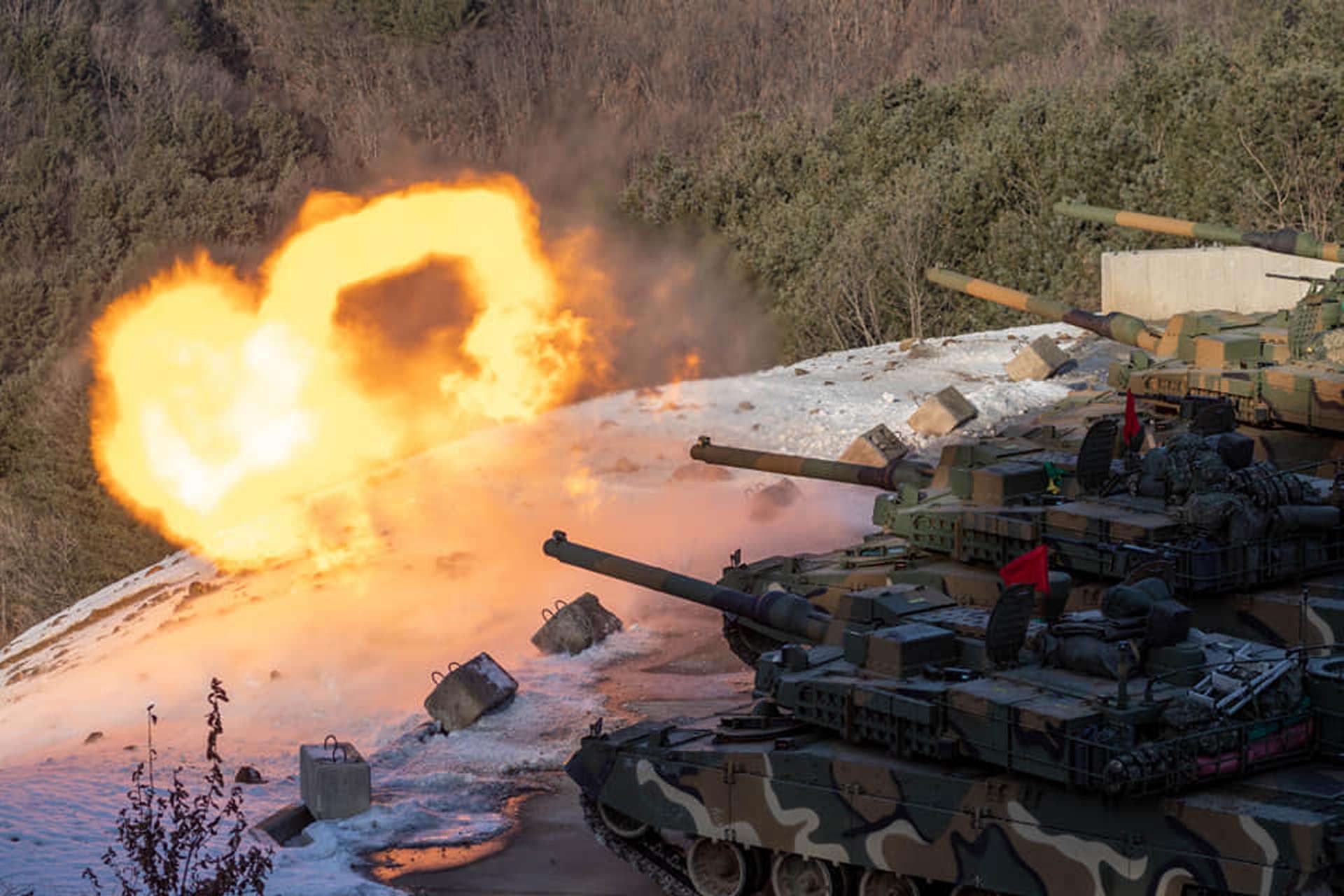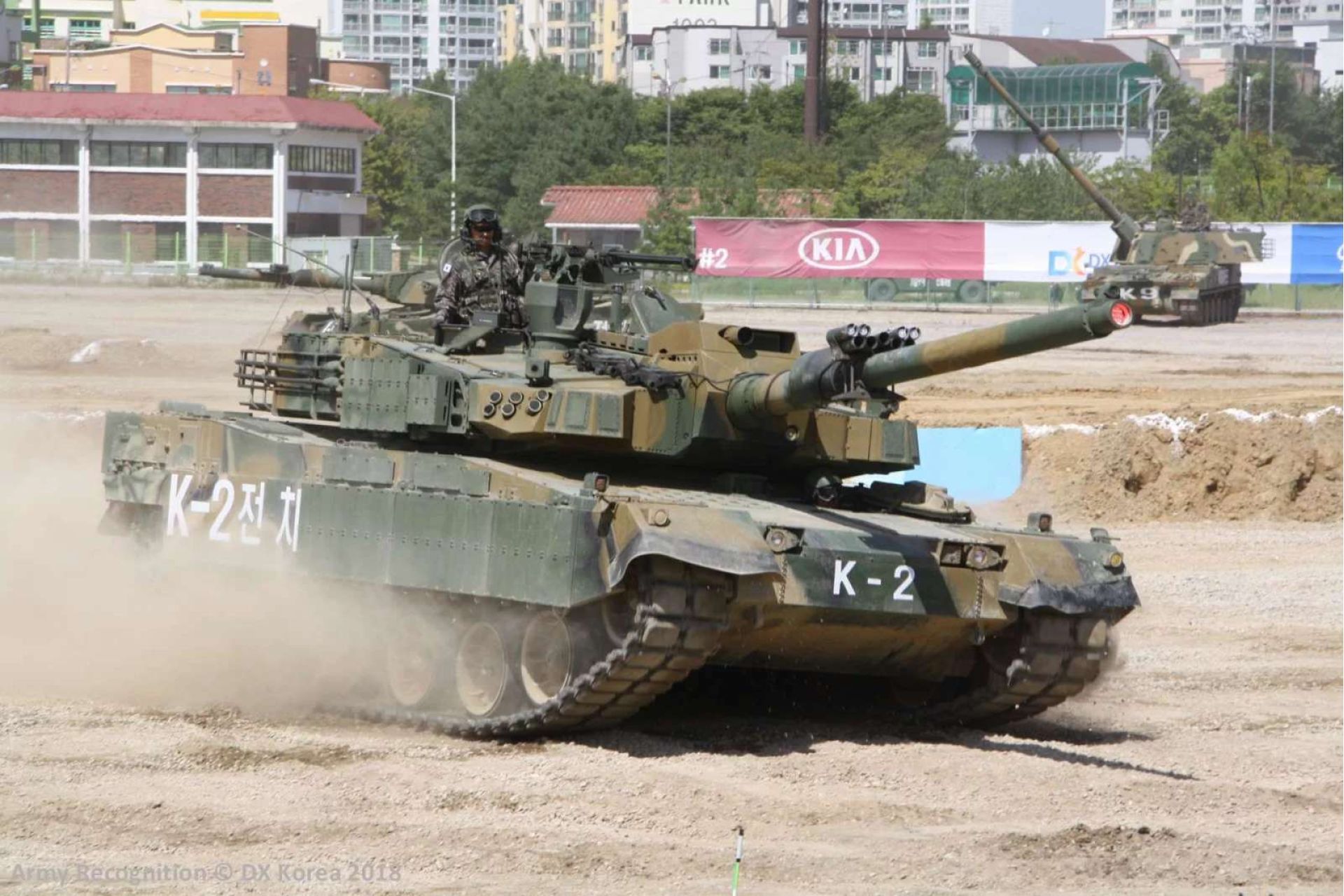Breaking News
Armenia Eyes South Korea's K2 Main Battle Tank Adapted for Mountainous Terrain.
According to an article by the South Korean media outlet Chosun Biz, dated October 4, 2024, Armenian Defense Minister Suren Papikyan visited South Korea in September 2024 to explore the possibility of acquiring K2 Black Panther main battle tanks developed by Hyundai Rotem. This visit also allowed the Armenian minister to attend the 2024 High-Level Meeting on Responsible Military Use of Artificial Intelligence (REAIM), organized by South Korea’s Ministry of National Defense and Ministry of Foreign Affairs on September 9 and 10.
Follow Army Recognition on Google News at this link

South Korean K2 Black Panther Main Battle Tank (Picture source: South Korea MoD)
According to the Armenian Military Portal, Papikyan also used this visit to initiate discussions on the supply of South Korean weapons, with a particular interest in the K2 tank. Furthermore, the Armenian media outlet Caliban reports that Armenian Security Council Secretary Armen Grigoryan also traveled to South Korea on September 6 to hold several meetings focused on weapons procurement issues.
The K2 main battle tank, currently used by the South Korean Army, features a semi-active pneumatic suspension system, an advanced technology that is especially well-suited to mountainous terrains. In Armenia, where nearly 86% of the territory is mountainous, this capability could provide a significant strategic advantage by enhancing the mobility and precision of troops in combat. Additionally, the tank is equipped with a sensor that automatically adjusts the suspension based on the terrain, further improving accuracy and crew comfort.
Currently, according to Military Balance 2024, Armenia’s armored fleet comprises older models, including approximately 109 main battle tanks: 3 T-54s, 5 T-55s, around 100 T-72A/Bs, and 1 T-90A, all inherited from the Soviet era and modernized by Russia. However, it is important to note that these figures may be subject to caution due to losses sustained in the fighting since 2020 in Nagorno-Karabakh. Although these tanks remain in service, the acquisition of the K2 would enable Armenia to acquire state-of-the-art equipment to address persistent tensions with Azerbaijan, a neighboring country with which it has experienced repeated conflicts during the 2020s.
In Europe, the K2 tank is already being deployed in Poland, where Hyundai Rotem has become a strategic defense partner. In August 2022, Poland reportedly signed a contract for the delivery of 180 K2 tanks, of which 46 have already been delivered this year, and a new agreement to supply an additional 180 units is under discussion. Romania is also reportedly considering the acquisition of this tank as part of a military modernization program. In competition with the German Leopard 2A8, the K2 has a price advantage, estimated at 26.2 billion won, compared to approximately 60 billion won for the Leopard 2A8, according to available estimates.

South Korean K2 Black Panther Main Battle Tank (Picture source: South Korea MoD)
The K2 Black Panther tank was developed in South Korea to achieve self-sufficiency in defense production, replacing the aging M48 Patton tanks. Launched in 1995, this project aimed to create a tank suitable for fast, network-centric maneuver warfare. Hyundai Rotem spearheaded its development, and the tank officially entered service with the South Korean Army (ROKA) in 2014 after extensive testing and prototyping phases. To date, approximately 410 units have been produced across multiple production batches, securing the K2’s place in South Korea’s national defense framework.
The K2 is armed with a 120mm 55-caliber smoothbore gun, capable of firing various munitions, including APFSDS rounds and HEAT shells. Thanks to its autoloading system, it can achieve a firing rate of 10 rounds per minute, with a total capacity of 40 rounds. It is also equipped with a Korean-developed munition, the KSTAM (Korean Smart Top-Attack Munition), designed for top-attack strikes against targets within a range of 2 to 8 kilometers. Secondary armament includes a 12.7mm heavy machine gun and a 7.62mm coaxial machine gun, enhancing its capabilities against both armored and soft targets.
Powered by a water-cooled 12-cylinder diesel engine generating 1,500 horsepower, the K2 can reach a maximum speed of 70 km/h on roads and 50 km/h on rough terrain. It has an operational range of approximately 450 kilometers and can accelerate from 0 to 32 km/h in 7 to 9 seconds, depending on the engine model. Its advanced in-arm suspension unit (ISU) allows it to adjust its height and posture, improving its handling over various terrains and expanding its gun elevation range.
The K2’s passive protection includes composite armor made of MIL-12560H steel and silicon carbide ceramic plates, supplemented by modular Explosive Reactive Armor (ERA) and Non-Explosive Reactive Armor (NERA) packages. Additionally, the tank is equipped with an overpressure system to defend against chemical and biological threats, an automatic fire suppression system, and neutron shielding to protect the crew from radiation exposure.
For active defense, the K2 is equipped with radar and laser warning receivers that detect threats such as anti-tank guided missiles. Upon detection, it can release multispectral smoke grenades, which obscure its position from enemy targeting systems. Under the K2 Product Improvement Program (PIP), future upgrades are planned, including a hard-kill active protection system capable of intercepting incoming projectiles before impact.
Primarily operated by the South Korean Army, the K2 has also been acquired or adapted by countries such as Poland and Türkiye. Variants such as the K2GF, customized to Polish military specifications, and the Altay, developed for Türkiye with South Korean technological support, demonstrate this international expansion. Other proposed models, like the K2EX for global export, the K2ME for the Middle East, and the K2NO for Norway, offer specific modifications to meet regional conditions and operational requirements.

South Korean K2 Black Panther Main Battle Tank (Picture source: Army Recognition)
According to Military Balance 2024, Armenia has significantly increased its defense budget, allocating USD 1.28 billion for 2023, marking a 46% rise from the previous year. This budget is expected to reach approximately USD 1.4 billion in 2024. Historically dependent on Russia for its military equipment, Armenia is now diversifying its suppliers, partly due to Moscow’s inability to fulfill deliveries agreed upon in 2021, as Russia has redirected resources to meet domestic needs driven by the conflict in Ukraine.
To address this shortfall, Armenia has signed several major contracts with India, including the purchase of 90 ATAGS 155mm towed howitzers, an undisclosed number of Pinaka multiple-launch rocket systems, and Akash air defense systems. Armenia is also transitioning to Western defense standards, incorporating NATO-standard artillery, adopting Western military training methods, and embracing advanced command-and-control structures. As part of this shift, Defense Minister Suren Papikyan attended the Paris Air Show in June 2023, signaling Armenia’s growing interest in sourcing defense equipment from the West. France, in particular, has expressed openness to arms sales to Armenia.
Before the escalation of hostilities with Azerbaijan in 2023, Armenia had already begun distancing itself from Russia as its primary security guarantor. This shift became evident in 2022 when Moscow declined to intervene during a significant border clash between Armenia and Azerbaijan. In response, Yerevan invited an EU monitoring mission while rejecting a similar proposal from the Collective Security Treaty Organization (CSTO). The EU Mission in Armenia currently consists of 103 civilian personnel deployed until January 2025, with a possible extension. Furthermore, Armenia has effectively frozen its participation in CSTO activities, underscoring its move away from Russian-led security arrangements.

South Korean K2 Black Panther Main Battle Tank (Picture source: Army Recognition)


























